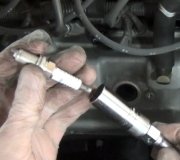Most common cause of backfiring when nothing else has changed is bad spark plug wires or a weak ignition coil. Another possibility is a burned intake valve but that's not common.
If the problem started after parts were replaced look first at the gap for the pickup coil in the distributor. As I recall that should be.012". I had a problem on my '78 LeBaron when I couldn't get the rotor off. I cracked it in two with a hammer and screwdriver. That resulted in a bent shaft and it pushed the pickup away another.006". After I managed to pound the shaft straight again I had a no-start because the gap was.018".
Disconnect and plug the vacuum hose to the distributor. If the backfiring stops, besides the air gap, look for signs of carbon-tracking on the distributor cap. If you have a V-8 engine, look at the four spark plug wires where they're clipped to the rear of the left valve cover. They should not be in the order of the spark plugs, (1, 3, 5, 7). Number 5 should be on one side, then follow the rest in order so it's 5, 1, 3, 7. You want 5 and 7 as far apart as possible. 7 fires right after 5 in the firing order, and under some conditions the spark for cylinder 5 can electromagnetically couple to the wire for cylinder 7 and cause that spark plug to fire as the piston is on its way up on the compression stroke.
Wednesday, April 3rd, 2013 AT 4:18 PM



